Poisson regression
Bayesian Modeling with RJAGS

Alicia Johnson
Associate Professor, Macalester College
Normal likelihood structure
$Y$ = volume (# of users) on a given day
$Y \sim N(m, s^2)$
Technically...
- The Normal model assumes $Y$ has a continuous scale and can be negative.
- But $Y$ is a discrete count and cannot be negative.
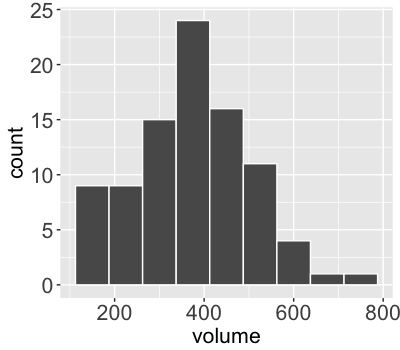
The Poisson model
$Y$ = volume (# of users) on a given day
$Y \sim \text{Pois}(l)$
$Y$ is the # of independent events that occur in a fixed interval (0, 1, 2,...).
Rate parameter $l$ represents the typical # of events per time interval
($l > 0$).
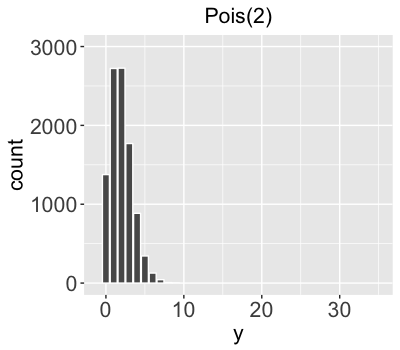
The Poisson model
$Y$ = volume (# of users) on a given day
$Y \sim \text{Pois}(l)$
$Y$ is the # of independent events that occur in a fixed interval (0, 1, 2,...).
Rate parameter $l$ represents the typical # of events per time interval
($l > 0$).
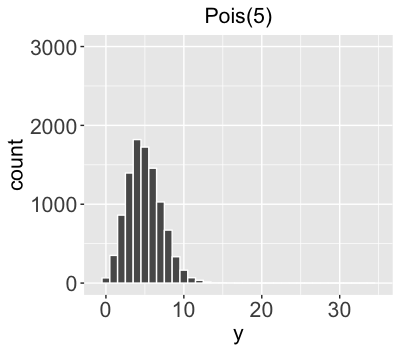
The Poisson model
$Y$ = volume (# of users) on a given day
$Y \sim \text{Pois}(l)$
$Y$ is the # of independent events that occur in a fixed interval (0, 1, 2,...).
Rate parameter $l$ represents the typical # of events per time interval
($l > 0$).

The Poisson model
$Y$ = volume (# of users) on a given day
$Y \sim \text{Pois}(l)$
$Y$ is the # of independent events that occur in a fixed interval (0, 1, 2,...).
Rate parameter $l$ represents the typical # of events per time interval
($l > 0$).
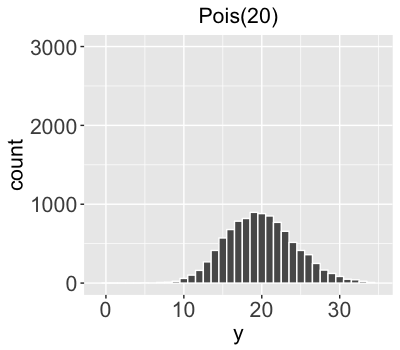
Poisson regression
$Y_i \sim \text{Pois}(l_i)$ where $l_i > 0$
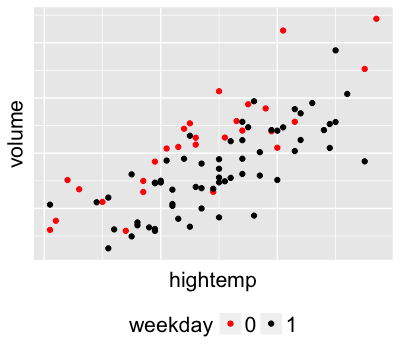
Poisson regression
$Y_i \sim \text{Pois}(l_i)$ where $l_i > 0$
$l_i = a + b X_i + c Z_i$
$\;$
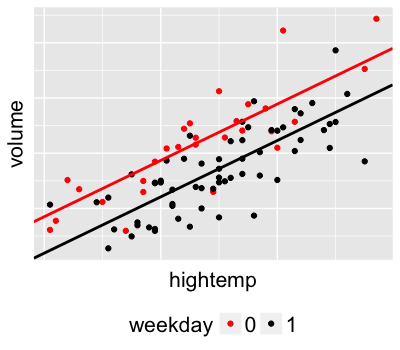
Poisson regression
$Y_i \sim \text{Pois}(l_i)$ where $l_i > 0$
$l_i = a + b X_i + c Z_i$
$\;$
A problem:
Linking $l_i$ directly to the linear model assumes $l_i$ can be negative.
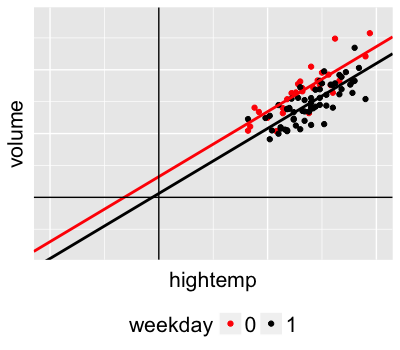
Poisson regression
$Y_i \sim \text{Pois}(l_i)$ where $l_i > 0$
$log(l_i) = a + b X_i + c Z_i$
$\;$
A solution:
Use a log link function to link $l_i$ to the linear model. In turn:
$$l_i = e^{a + b X_i + c Z_i}$$
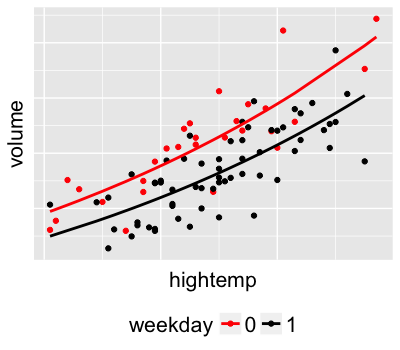
Poisson regression
$Y_i \sim \text{Pois}(l_i)$ where $l_i > 0$
$log(l_i) = a + b X_i + c Z_i$
$\;$
A solution:
Use a log link function to link $l_i$ to the linear model. In turn:
$$l_i = e^{a + b X_i + c Z_i}$$
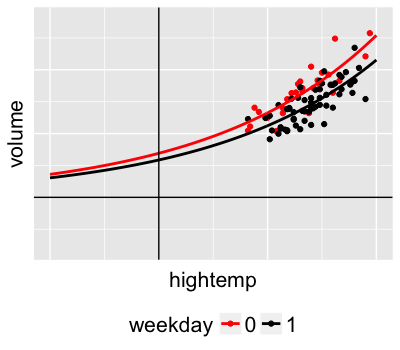
Poisson regression in RJAGS
$Y_i \sim \text{Pois}(l_i)$
$log(l_i) = a + b X_i + c Z_i$
$a \sim N(0, 200^2)$
$b \sim N(0, 2^2)$
$c \sim N(0, 2^2)$
poisson_model <- "model{
# Likelihood model for Y[i]
# Prior models for a, b, c
}"
Poisson regression in RJAGS
$Y_i \sim \text{Pois}(l_i)$
$log(l_i) = a + b X_i + c Z_i$
$a \sim N(0, 200^2)$
$b \sim N(0, 2^2)$
$c \sim N(0, 2^2)$
poisson_model <- "model{
# Likelihood model for Y[i]
# Prior models for a, b, c
a ~ dnorm(0, 200^(-2))
b[1] <- 0
b[2] ~ dnorm(0, 2^(-2))
c ~ dnorm(0, 2^(-2))
}"
Poisson regression in RJAGS
$Y_i \sim \text{Pois}(l_i)$
$log(l_i) = a + b X_i + c Z_i$
$a \sim N(0, 200^2)$
$b \sim N(0, 2^2)$
$c \sim N(0, 2^2)$
poisson_model <- "model{
# Likelihood model for Y[i]
for(i in 1:length(Y)) {
Y[i] ~ dpois(l[i])
}
# Prior models for a, b, c
a ~ dnorm(0, 200^(-2))
b[1] <- 0
b[2] ~ dnorm(0, 2^(-2))
c ~ dnorm(0, 2^(-2))
}"
Poisson regression in RJAGS
$Y_i \sim \text{Pois}(l_i)$
$log(l_i) = a + b X_i + c Z_i$
$a \sim N(0, 200^2)$
$b \sim N(0, 2^2)$
$c \sim N(0, 2^2)$
poisson_model <- "model{
# Likelihood model for Y[i]
for(i in 1:length(Y)) {
Y[i] ~ dpois(l[i])
log(l[i]) <- a + b[X[i]] + c*Z[i]
}
# Prior models for a, b, c
a ~ dnorm(0, 200^(-2))
b[1] <- 0
b[2] ~ dnorm(0, 2^(-2))
c ~ dnorm(0, 2^(-2))
}"
Caveats
$Y \sim \text{Pois}(l_i)$
- Assumption: Among days with similar temperatures and weekday status, variance in $Y_i$ is equal to the mean of $Y_i$.
- Our data demonstrate potential overdispersion - the variance is larger than the mean.
- Though not perfect, this model is an OK place to start.
Let's practice!
Bayesian Modeling with RJAGS

